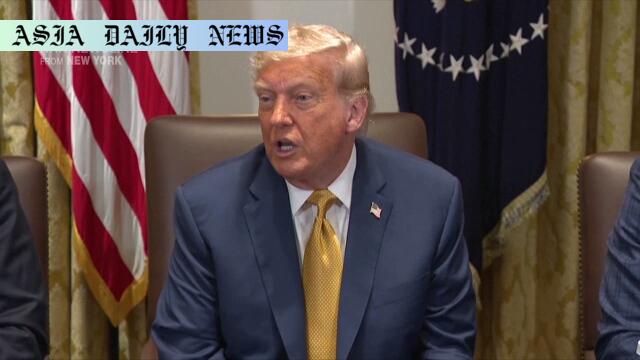Tariffs – US President Donald Trump raises tariffs for Brazil and seven other countries, signaling a firm stance on trade policies.

Trump’s Tariff Strategy: A Shift in Trade Policy
In a remarkable move that underscores the current administration’s aggressive trade policy, US President Donald Trump has announced substantial tariff hikes for eight specific nations. This revelation comes amidst ongoing tensions surrounding trade imbalances and the United States’ efforts to rectify decades-long deficits. The countries affected by this policy change are Brazil, Algeria, Iraq, Libya, Sri Lanka, Brunei, Moldova, and the Philippines, with rates ranging from 20 percent to 50 percent.
Brazil, in particular, is facing the steepest hike—a significant leap from the preceding 10 percent rate in April to an imposing 50 percent. Trump, during his announcement, stated his dissatisfaction with Brazil’s trade practices, lamenting its lack of cooperation in establishing reciprocal trade relations with the US. At the same time, he expressed his respect for Brazil’s former president, Jair Bolsonaro, indirectly referencing ongoing political trials in the country with a dismissive tone. This strategic alignment of tariffs with US trade deficits and external political developments is noteworthy as the administration transitions from a suspended tariff plan earlier this year to one of bold enforcement.
An Evaluation of Tariff Implications
The implementation of these tariffs has far-reaching implications for both the global and domestic markets. By targeting nations with substantial trade surpluses, such as Brazil and the Philippines, these measures aim to level the playing field and encourage fair trading practices. However, such policies also carry the risk of retaliatory tariffs from affected nations, potentially escalating into prolonged trade disputes.
The decision to hike tariff rates has been met with mixed reactions. Proponents argue that these tariffs are necessary to promote domestic industries and curb unfair trade advantages enjoyed by foreign exporters. On the other hand, critics warn of potential disruptions in supply chains, increased costs for American businesses relying on imported goods, and strained diplomatic relations.
Context of the Tariff Announcement
It’s important to consider the broader context in which these tariffs have been announced. In April, the Trump administration had floated the concept of ‘reciprocal tariffs,’ intending to impose equivalent duties on nations with substantial trade surpluses. However, this plan was temporarily suspended and placed under review until August 1, allowing room for renegotiations and diplomatic dialogues.
The recent resumption of this policy signals a shift toward more assertive trade tactics. The identical wording in Trump’s tariff letters to these nations, with only the rates and countries marked differently, reflects an overarching strategy aiming to frame these tariffs as a unified response to unequal trade practices rather than isolated measures targeted at individual nations.
While it’s too early to gauge the exact economic consequences of these tariffs, they undeniably signify an escalation in the US’s approach to handling its trade relationships. With the global economy still reeling from various disruptions, these new trade barriers could have ripple effects extending far beyond the directly affected nations.
Commentary
The Significance of Tariffs in Modern Trade
Tariffs have long been a powerful instrument in the arsenal of economic policies, wielded by nations to regulate trade and protect domestic industries. However, their implementation often sparks fierce debates over their efficacy and long-term consequences. The recent announcement by President Trump to impose heightened tariffs on eight nations is no exception, as it has reignited discussions around the role and impact of such measures in a globally connected economy.
Balancing Trade Deficits: A Justified Move?
One of the primary rationales for imposing tariffs is to address trade imbalances. By targeting countries with significant trade surpluses, the current administration seeks to leverage its economic influence to bring about fairer trade practices. In theory, this approach may push partnering nations to reconsider their policies and foster a more balanced trade landscape. However, this tactic also comes with risks, including potential retaliation and strained diplomatic relations that could offset the intended benefits.
The Risks of Overreach
While the motivation behind these tariffs may appear justified from a certain perspective, the approach raises concerns over potential overreach. Implementing such measures unilaterally, without significant diplomatic engagement, could alienate key allies and trading partners. For instance, Brazil’s 50 percent tariff is likely to strain US-Brazil relations, particularly when coupled with politically charged comments from the President. This could hinder future collaborations, both economically and diplomatically.
Charting the Path Forward
As these new tariffs take effect, the onus lies on policymakers to closely monitor their outcomes and adjust strategies accordingly. Striking a balance between protecting domestic interests and maintaining healthy international trade relations is critical. While tariffs may serve as a short-term solution, establishing longstanding partnerships through negotiations, trade agreements, and collaborative frameworks remains the ideal route for sustainable growth in the global economy.


